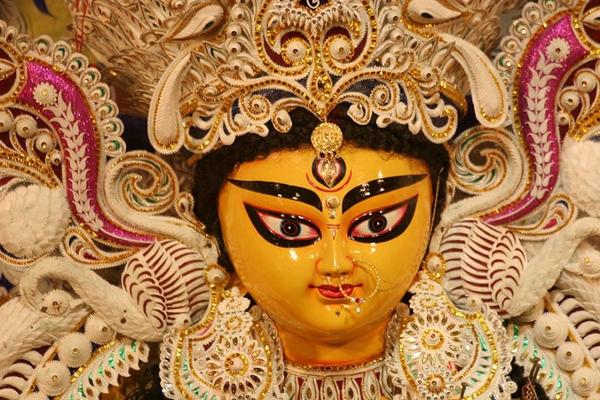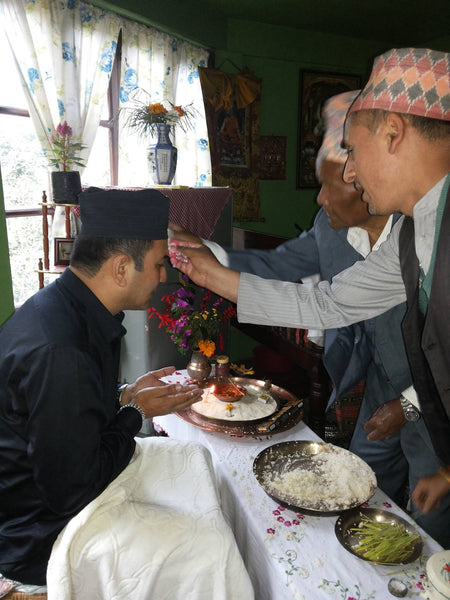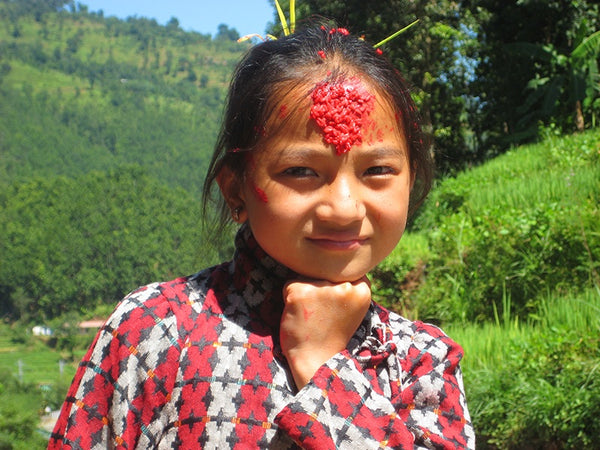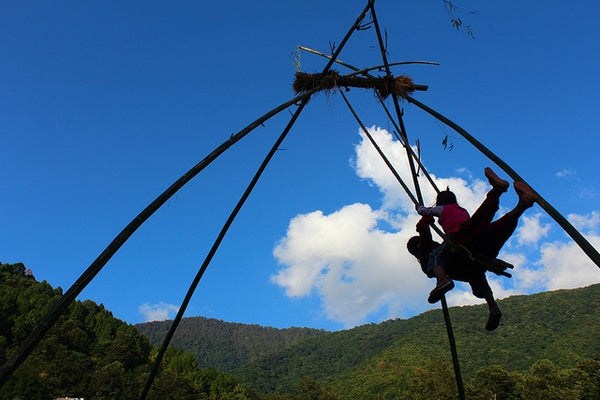
Travel Diaries India 2014 -11 (Dussehra)
In my previous post I mentioned Dussehra, the biggest Hindu festival of India, which happened to be underway as I arrived in the country. Traveling eastwards, where Darjeeling is located, I fortuitously moved into the epicentre of the celebrations - West Bengal, the "home" of Goddess Durga.

Whole towns and villages were lighted up in a psychedelic frenzy, in the center of which were erected magnificent altars called "pandals." Drums, cymbals, vedic chants and modern music reverberated through loud speakers as people milled about in a carnival atmosphere.
For 10 days Durga, the original form of Shakti, or the primordial cosmic energy associated with the female creative power in Hinduism, is locked in mortal combat with the demon Mahishasur, a nemesis of the gods. On the 10th day, the 18 handed-Durga would finally slay the demon.

I arrived on saptami, or the seventh day, when the crescendo starts building up. For the last four days of the Pujo, as the celebration is called here, it's a government holiday. People come home from afar and families and friends get together for days of revelry.

From evening to late night people in thousands throng to the pandals to pay their obeisance to the goddess, which is in the form of an idol. The latter is part of a clay tableau made by artisans whose families have perfected the art for many generations. Even the pandals are amazing works of art themselves. Using mostly bamboo and fabric, artisans create in just a few days fantastic palatial edifices.

The day after the festivities, the idols are immersed in the nearest river and the pandals are taken down.
In the Darjeeling hills which are predominantly populated by ethnic Nepalis the celebrations are less raucous. There are no pandals and Durga idols like in the rest of the state. However, the festive spirit is palpable, making the normally cheery hill folk even more sanguine.

On the 10th day of festivities - the day when Durga slays the demon - Nepalis observe the occasion with a unique tradition called "tikka." Older folks invoke the blessings of the gods for younger family members and stick grains of rice on their foreheads to mark the occasion. It usually starts with parents blessing their children and then the grandparents who bless us all.

This also the time when hill folks snap together whole bamboos to make a "lingay ping" or a swing, where children frolic all day long. This tradition is mostly now kept up in the rural areas. Kites are also flown, a sign to the gods to send no more rains because the harvest is now to ensue.

One of my favorite childhood memories was going to my father’s village to receive "tikka" from my grandparents. Although my grandparents have been gone for many years, I still hear their hopeful blessings and pass these special sentiments on to my own children.


Leave a comment